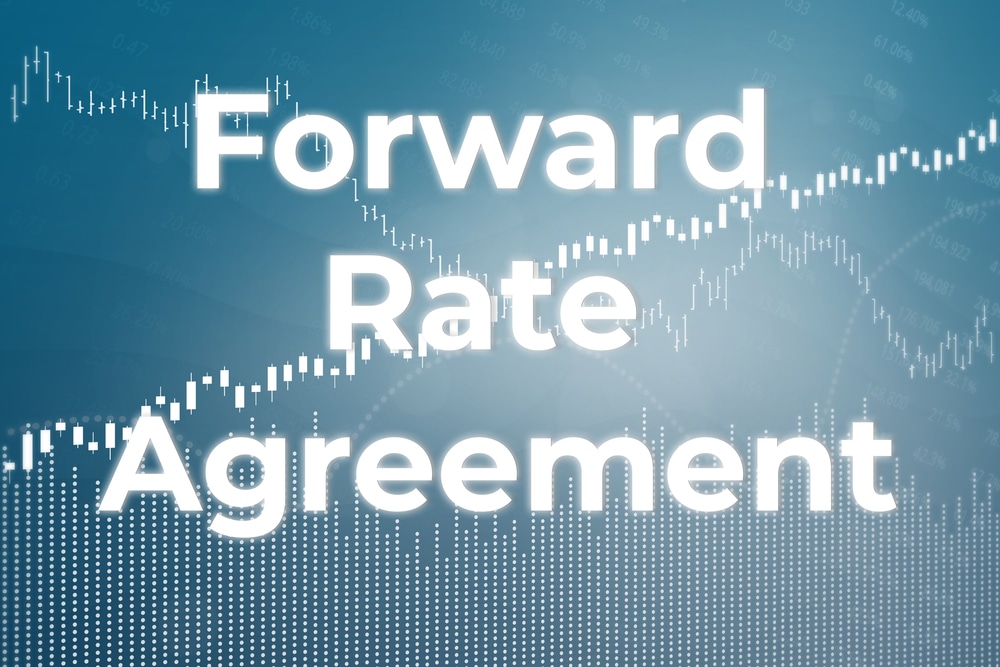
In Forward Rate Agreement (FRA), two entities sign a contract in which they stipulate that there will be an exchange of specified foreign currency based on a predetermined rate at a fixed point in the future. They do not base the contract on an actual principal, but a notional amount serves as the reference for the interest rate exchange. The validity of the agreements is for a period of up to six months. Companies commonly utilize FRAs to limit their exposure to interest rate risk.
FRAs are effective for managing short-term interest rate risks. In most circumstances, the agreements are only effective for one cycle. Borrowers and investors may, for example, pick a long-term interest rate float while intending to lock in the interest rate for a specified payment period in the future. Both borrowers and investors may find FRAs to be a beneficial instrument for hedging.
How does an FRA work?
FRA is based on what you need for the time period you’ve specified. You weigh the floating against fixed interest rate and apply it to the borrowed sum of money.
For instance, let’s say that a company that has borrowed money on a variable interest rate thinks that the rates are likely to rise in the coming months. An FRA allows the company to fix payments for the remainder of the loan’s duration while keeping the underlying borrowing rate variable but safeguarded.
FRAs do not imply an obligation to borrow money. Although they work in tandem with the debt, they are a different entity from it. In order to obtain a desired interest rate outcome, the contract agreement is described in terms of a principal amount that can be paired with a debt portfolio. So any future choice based on the risk profile of a borrower’s rate will not change the underlying borrowing. Because of this, payments made under the FRA and payments made are completely independent.
It is possible to tailor the contract to the parties’ unique needs because FRA contracts are over the counter. Furthermore, they are based on the LIBOR rate and thus indicate forward rates rather than spot prices. When calculating the forward rate, keep in mind that the spot rate is not the same as the forward rate.
Calculating FRA
Let’s look at the FRA’s formula below.
FRAP (FRA Payment) = ((R−FRA) ×NP×P)/Y) × (1/(1+R×(Y/P))
Five variables are taken into consideration in the FRA payout calculation. They are defined as follows:
FRA = Forward Rate Agreement
R = the standard rate of interest.
NP = for the notional principal.
P = Stands for “period,” which is the total number of days covered by the agreement
Y = the total number of days in the year in accordance with the day-count rule.
Working example
Let’s take an instance where Company Y signs an FRA with Company X. Under the terms of the agreement, Company X will pay Company Y a fixed rate of 5%, with the principal amount being $10 million.
The contract is valid for six months. The FRA rate is to be paid at 40 basis points below the current rate. On its part, Company X is to get a one-year LIBOR rate on the principal in four years. The terms also stipulate that payment is to be done in cash, and the discount will be based on both the validity period and the applicable rate.
Plugging these numbers into the formula above, we arrive at the following conclusion;
FRA=4.6%; R=5%; NP=$10 million; P=240 days; Y=360 days
Accordingly, the FRA payments (FRAP) will be as follows:
RAP= ((0.05-0.046) x$10 million x 240)) x (1/(1+0.005×240/360))= $25,806.45
Paying the buyer comes down to whether the payment is positive or negative. If the figure is positive, then the seller pays the buyer and vice versa.
We use 360 days in a year, according to the day-count standard. Also, keep in mind that the $10 million figure isn’t really exchanged. Instead, the two entities participating in this transaction use the value simply as a reference point.
Advantages and disadvantages of FRA
Advantages
- FRA is an effective way of limiting the risk of future borrowing and lending in case rates change for the worst. For instance, a bank that has borrowed money at a fixed rate and anticipates the rates to drop in the future might gain by engaging in FRA as a floating ratepayer.
- It is widely utilized for trading depending on market participants’ predictions about interest rates.
- They do not affect the Balance Sheet Ratios because they are derivative contracts that appear on the Off-Balance Sheet.
Disadvantages
- Because trading takes place over the counter, they carry more counterparty risk than conventional Futures contracts.
- If the original contract is too close and the first counterparty is not ready to change its position, finding a third counterparty to end the transaction before maturity might be problematic.
In summary
FRAs are OTC transactions that lock in a specific interest rate for a set amount of time at a predetermined future date. Negotiations occur between the buyer and seller to determine the start and end dates of the rate-fixing period. It is an effective way to cushion against fluctuations in FX rates.








Leave a Reply